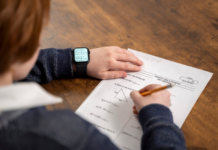Classroom management is a critical aspect of teaching that directly impacts the learning environment and student success. Effective classroom management techniques are essential for creating a positive and productive atmosphere where students feel safe, respected, and motivated to learn. Here are key strategies that educators can implement to achieve this goal.
Establishing a Positive Classroom Culture
Clear Expectations and Consistent Routines: One of the foundational elements of effective classroom management is establishing clear expectations and consistent routines. At the beginning of the school year or semester, educators should communicate their expectations regarding behavior, academic performance, and classroom procedures. These expectations should be reinforced regularly through visual aids, reminders, and consistent practice. Consistent routines, such as how students enter the classroom, transition between activities, and submit assignments, help create a structured environment where students know what to expect, reducing anxiety and misbehavior.
Building Positive Relationships: Building positive relationships with students is crucial for maintaining a respectful and supportive classroom atmosphere. Educators should take the time to get to know their students, understand their interests, and show genuine care for their well-being. Creating a sense of community within the classroom can be achieved through team-building activities, collaborative projects, and regular opportunities for students to share their thoughts and experiences. When students feel valued and respected, they are more likely to engage positively in the learning process.
Encouraging Student Ownership and Voice: Empowering students to take ownership of their learning and giving them a voice in the classroom fosters a sense of responsibility and investment in their education. Educators can encourage student ownership by involving them in setting classroom rules, making decisions about learning activities, and providing opportunities for self-assessment and goal-setting. When students have a say in their learning environment, they are more likely to take responsibility for their behavior and contribute positively to the classroom culture.
Positive Reinforcement and Recognition: Positive reinforcement is an effective strategy for promoting desired behaviors and maintaining a positive classroom atmosphere. Educators should regularly acknowledge and celebrate student achievements, both academic and behavioral. This can be done through verbal praise, rewards, or recognition programs. Highlighting positive behaviors, such as cooperation, perseverance, and kindness, reinforces the values and expectations of the classroom. Additionally, creating a system for students to recognize and appreciate their peers’ contributions can further enhance the positive climate.
Managing Classroom Dynamics and Addressing Misbehavior
Proactive Classroom Management: Proactive classroom management involves anticipating potential disruptions and implementing strategies to prevent them. This includes creating a well-organized and engaging lesson plan that keeps students actively involved and minimizes downtime. Educators should use a variety of instructional methods to cater to different learning styles and maintain student interest. Additionally, seating arrangements and classroom layout should be designed to facilitate effective supervision and minimize distractions.
Effective Communication: Clear and effective communication is essential for managing classroom dynamics and addressing misbehavior. Educators should use concise and direct language when giving instructions and provide clear explanations for classroom rules and procedures. Active listening is equally important, as it demonstrates respect for students’ perspectives and helps identify underlying issues that may contribute to misbehavior. Nonverbal communication, such as maintaining eye contact and using appropriate body language, also plays a role in conveying authority and approachability.
Conflict Resolution and Problem-Solving: Conflicts and behavioral issues are inevitable in any classroom setting. Effective classroom management involves addressing these issues promptly and constructively. Educators should use conflict resolution strategies, such as mediation and restorative practices, to help students resolve disputes and learn from their experiences. Encouraging students to take responsibility for their actions and involving them in problem-solving processes fosters a sense of accountability and helps build critical social skills.
Consistent and Fair Consequences: Consistency and fairness are key to maintaining discipline and trust in the classroom. Educators should establish a clear system of consequences for misbehavior that is consistently applied to all students. Consequences should be appropriate to the severity of the behavior and should aim to teach rather than punish. It is important to communicate the consequences in a calm and respectful manner, emphasizing the connection between actions and outcomes. Providing opportunities for students to reflect on their behavior and make amends can help reinforce positive change.
Conclusion
Effective classroom management is essential for creating a positive and productive learning atmosphere. By establishing clear expectations, building positive relationships, encouraging student ownership, and using positive reinforcement, educators can create a supportive and engaging classroom culture. Proactive classroom management, effective communication, conflict resolution, and consistent consequences are crucial for managing classroom dynamics and addressing misbehavior. Implementing these strategies helps ensure that students feel safe, respected, and motivated to learn, ultimately leading to improved academic and behavioral outcomes. As educators continue to refine their classroom management techniques, they contribute to a more positive and productive educational experience for all students.


























